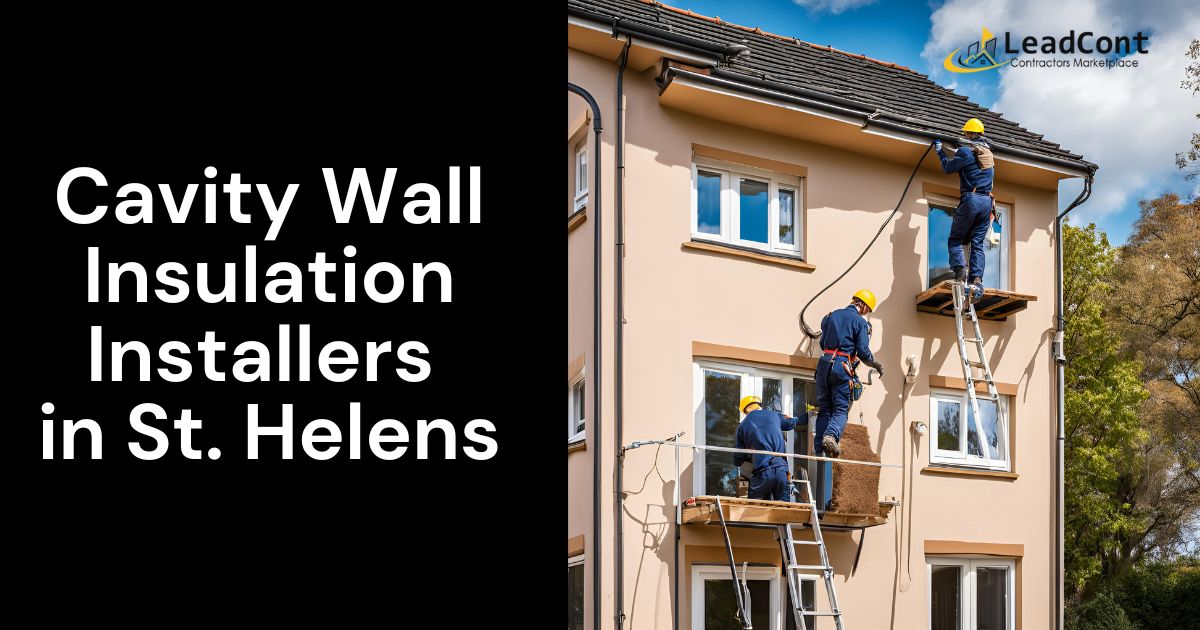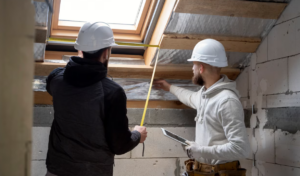acf domain was triggered too early. This is usually an indicator for some code in the plugin or theme running too early. Translations should be loaded at the init action or later. Please see Debugging in WordPress for more information. (This message was added in version 6.7.0.) in /www/wwwroot/leadcont.com/blog/wp-includes/functions.php on line 612117950 NW 53rd Street Suite 337
Miami, Florida 33166

Cavity Wall Insulation Installers are an effective solution for improving a home’s energy efficiency by reducing heat loss through the walls. It involves partially filling the cavity between two layers of brickwork with insulating materials like mineral wool, polystyrene beads, or foam. These materials create a thermal barrier that helps keep buildings warmer in winter and cooler in summer. For homeowners in St. Helens, cavity wall insulation is essential since many properties were built before modern energy-saving measures were widely adopted.
Cavity wall insulation provides numerous benefits that extend well beyond cutting heating costs. By preventing heat loss, it enables homeowners to maintain a warm indoor environment even during the coldest winters without overusing heating systems. This results in significant long-term savings. Insulation also eliminates cold spots and drafts, making homes more comfortable to live in. For those building new homes in St. Helens, energy-efficient features like cavity wall insulation can increase property value as energy-efficient houses are more desirable. Additionally, reducing energy consumption translates into lower carbon emissions, making it an eco-friendly option for environmentally conscious residents in St. Helens.

Cavity wall insulation follows a simple yet highly effective process. A professional installer begins by assessing your home to determine whether it is suitable for insulation. Once confirmed, small holes are drilled into the outer walls, and insulating material is injected into the cavity. This material fills the gaps, creating a barrier that prevents heat from escaping. Afterward, the installer seals the holes, leaving the walls looking unchanged. The entire process is quick, often taking just a few hours for an average-sized house, and causes minimal disruption to daily life.
If you are unsure whether your house in St. Helens could benefit from cavity wall insulation, look for some common signs. High energy bills are often the first clue, as poor insulation allows heat to escape, forcing you to use more energy to maintain comfortable temperatures. You might also notice cold spots or drafts in certain parts of your home, which suggest inadequate insulation. Damp or mold growth on walls could also indicate that your home is not retaining heat properly. Homes built before the 1980s, which typically lack modern insulation, are particularly good candidates for this improvement.
While cavity wall insulation offers many benefits, it is not suitable for every property. Homes with narrow or rubble-filled cavities, or those with existing damp issues, may not be ideal candidates. Damp-proofing problems should always be resolved before installing insulation, as wet materials can worsen the issue rather than improve it. Thermal bridging, where heat escapes through parts of the wall that are not insulated, is another challenge but can be minimized with proper installation. Additionally, reduced airflow caused by insulation can trap moisture inside walls, so adequate ventilation is essential. These potential issues highlight the importance of hiring experienced professionals who can handle such challenges effectively.
Homeowners in St. Helens can take advantage of government programs like the Energy Company Obligation (ECO4) to reduce the cost of cavity wall insulation. These schemes provide funding for energy efficiency improvements, such as insulation, helping residents lower their energy bills and carbon footprints. Eligibility for these grants often depends on income, benefits, or property conditions. Applying is straightforward and involves contacting an accredited installer who will evaluate your home and guide you through the process. These grants can significantly reduce upfront costs, making cavity wall insulation a viable option for more households.
The cost of cavity wall insulation in St. Helens typically ranges from £300 to £1,200, depending on the size of the property and the materials used. Although this may seem like a significant expense, the energy savings make it a worthwhile investment. On average, homeowners save up to £250 annually on heating bills, allowing the insulation to pay for itself within a few years. Combining government grants with these savings further increases the financial advantages, making this upgrade an excellent long-term investment.

Cavity wall insulation enhances daily life in several ways beyond just cost savings. It regulates and balances indoor temperatures throughout the year, reducing the need for heating systems in winter and cooling systems in summer. This consistent temperature control makes homes more comfortable and can even reduce noise from outside, creating a quieter living space. From a health perspective, insulation lowers the chances of dampness and mold, which are common in poorly insulated homes and can lead to respiratory problems. Additionally, knowing that your home uses less energy for climate control can be deeply satisfying, especially for environmentally conscious individuals. Overall, cavity wall insulation improves both your living environment and your environmental impact.
Despite its benefits, several myths about cavity wall insulation may cause hesitation among homeowners. One common myth is that insulation causes dampness. In reality, properly installed insulation prevents moisture from entering walls, which reduces the risk of damp problems. Another misconception is that insulation is only suitable for older homes. While it is true that older properties often lack insulation, newer homes can also benefit, particularly if their existing insulation has degraded over time. Some homeowners worry that installation is messy or disruptive, but professional installers ensure that the process is efficient and minimally invasive. Addressing these myths helps homeowners make informed decisions about improving their properties.
Cavity wall insulation is a practical and effective solution for homeowners in St. Helens who want to improve energy efficiency, reduce heating costs, and enhance overall comfort. With government grants available to lower installation costs, there has never been a better time to invest in this upgrade. Whether you are looking to save money, increase comfort, or reduce your carbon footprint, cavity wall insulation is an excellent choice. Contact a trusted installer today to schedule a free consultation and start your journey toward a warmer, more energy-efficient home.
Can every house have cavity wall insulation?
Not all homes are suitable. Houses with pre-filled cavities or narrow gaps often do not qualify. A professional assessment can confirm whether your property is eligible.
How long does cavity wall insulation last?
Cavity wall insulation typically lasts as long as the building, often 25 years or more. Proper installation ensures minimal maintenance requirements over time.
Will the installation process damage my property?
No, the installation process is non-invasive. Skilled installers drill small holes, which are sealed after the insulation is injected, leaving no visible marks.
Does cavity wall insulation help with soundproofing?
Yes, cavity wall insulation can reduce noise transmission through walls, making your home quieter and more comfortable to live in.
Can cavity wall insulation be removed if needed?
Yes, insulation can be removed if necessary, such as in cases of improper installation or when wall repairs are required. This process should be handled by specialists with the right tools and expertise.
Ever find yourself staring at your computer screen a good consulting slogan to come to mind? Oftentimes.
